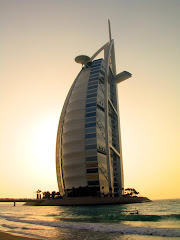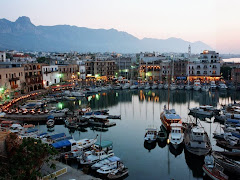 Vatican City is one of the world's smallest states since 1929. From 1450, the Vatican called in over a dozen of masters including Michelangelo, Raphael and Leonardo Di Vinci from central Italian cities to cradle of Renaissance art.
Vatican City is one of the world's smallest states since 1929. From 1450, the Vatican called in over a dozen of masters including Michelangelo, Raphael and Leonardo Di Vinci from central Italian cities to cradle of Renaissance art.
The Vatican Museums have one of the world’s greatest art collections, housed in a series of elegantly decorated palaces, apartments and galleries. (Below is the the statue of Laocoon and his sons.)

3. PIAZZA SAN PIETRO and BASILICA di SAN PIETRO

Piazza San Pietro (St. Peter's Basilica) was built by Bernini using the imposing porticoes between 1656 and 1667. These porticoes are arranged in semicircles along the short sides of the square. Above the canonic entablature are 140 colossal statues of Saints and the patron pope, Alexander VII.
St. Peter’s Basilica is the largest Roman Catholic building in the world. Tradition has it that St. Peter was crucified here in 67 AD, the last year of Nero’s reign, and buried nearby in a public cemetery outside the northern wall of the Circus of Nero. Fifteen major architects including Bernini worked during the 120 years of construction. Bernini also created the extravagant Baroque canopy, the Baldacchino, below Michelangelo’s massive dome.
4. COLOSSEUM

Completed in 80 AD, the Colosseum, Rome’s largest and most famous monument represents the centuries of the majesty and indestructibility of the capital of the world. Deadly gladiatorial combats and wild animal fights were staged by emperors and wealthy citizens largely to gain popularity. Colosseum could accommodate 55,000 people.
5. TREVI FOUNTAIN

Nicola Salvi’s theatrical design for Rome’s largest and most famous fountain,Trevi Fountain, was completed in 1762. In the middle, Neptune rides a shell-shaped chariot drawn by seahorses steered by two Tritons, demigods that are half-human in form, half-fish, one trying to master an unruly seahorse, the other leading a quieter beast, symbolizing the two contrasting moods of the sea. Behind is a baroque façade with statues of gods Plenty, Health and the Four Seasons.
6. SAN GIOVANNI in LATERANO

San Giovanni (St. John), Rome’s cathedral, was founded by Emperor Constantine in the early 4th century. It has rebuilt several times, notably in 1646 when Francesco Borromini restyled the interior, but retains its original basilica form.
7. PIAZZA DI SPAGNA and the SPANISH STEPS
 Shaped like a crooked bow tie, and surrounded by muted, shuttered facades, Piazza di Spagna is crowded all day and night. The most famous square in Rome is built in the 17th century to house the Spanish embassy to the Holy See. The steps with an extravagant Rococo design were built by the Italian architect Francesco de Sanctis in the 1720 to link the square with the French church Trinita dei Monti.
Shaped like a crooked bow tie, and surrounded by muted, shuttered facades, Piazza di Spagna is crowded all day and night. The most famous square in Rome is built in the 17th century to house the Spanish embassy to the Holy See. The steps with an extravagant Rococo design were built by the Italian architect Francesco de Sanctis in the 1720 to link the square with the French church Trinita dei Monti.
8. PIAZZA NAVONA

The beautiful Navona Square (formerly the Stadium of Domitian) was built on the remains of the stadium of Domitian. Parades of ochre colored buildings surround the square spanning about 250 years, from the late 16th century. The square has three fountains. One in the centre has an obelisk. The smaller ones are twin creations by Giacomo Della Porta.
9. ROMAN FORUM

In the early times of the Republic, the Roman Forum was a chaotic place with food stalls, brothels and temples. By the 2nd century BC, Rome created a more respectable center and the food stores were replaced by business centers and law courts. The forum remained the ceremonial center of the city under the Empire, with emperors erecting new temples and monuments. The Roman Forum consists of ,Trajan's Column, Basilica Ulpia, the Forum of Julius Caesar, the Forum of Augustus, Forum of Nerva, the Forum of Vespasian, and the Temple of Venus and Roma.
10. SANTA MARIA MAGGIORE

 This 5th century church dedicated to Mary was called Maggiore (‘the Great’) because its builders wanted to build the greatest of all churches dedicated to the Virgin. Santa Maria Maggiore with its exceptional blend of architectural styles ranging from early Christian to late Baroque is also famous for its superb mosaics.
This 5th century church dedicated to Mary was called Maggiore (‘the Great’) because its builders wanted to build the greatest of all churches dedicated to the Virgin. Santa Maria Maggiore with its exceptional blend of architectural styles ranging from early Christian to late Baroque is also famous for its superb mosaics.
TAGS: destinations discos scuba diving entertainment flights food forests fun golf hotels mountaineering mountains museums national parks night life packing paintings parachuting parasailing places resorts recreation restaurants sea











Wow. That's AMAZING! I know where I want to go now!
ReplyDeleteTruly Awesome and amazing Art & culture .It feels so blessed to just look at it on the website..I'm sure it will take our breath away on this very special Family holiday!
ReplyDelete